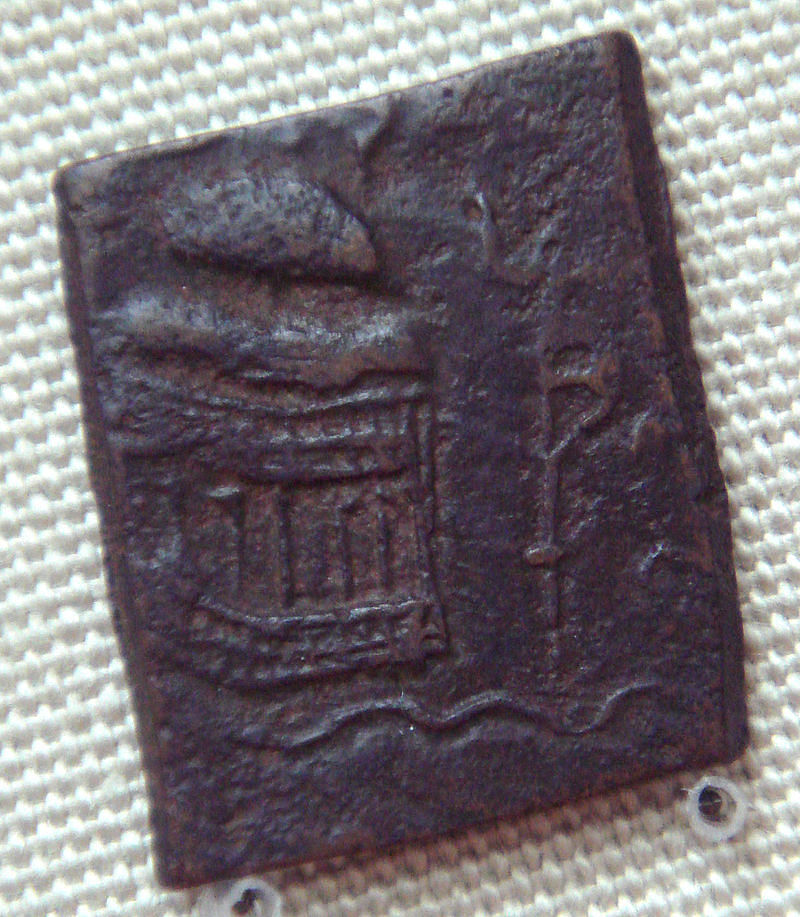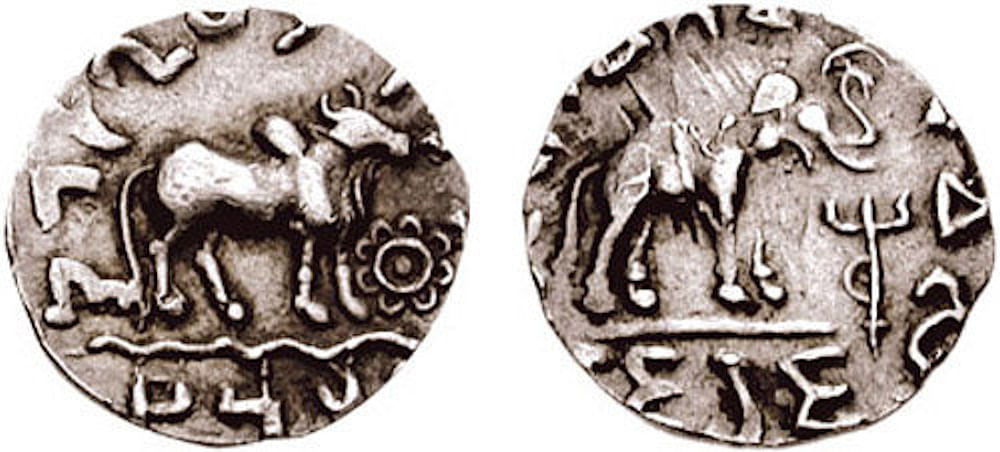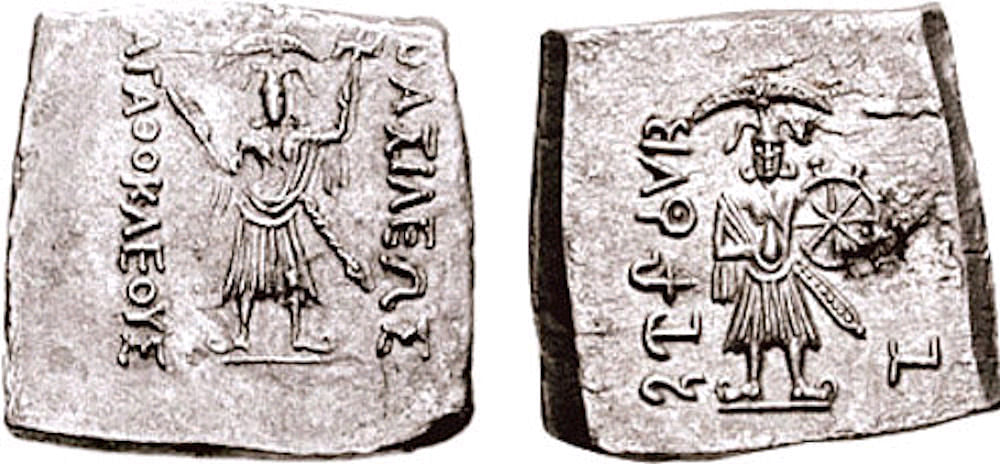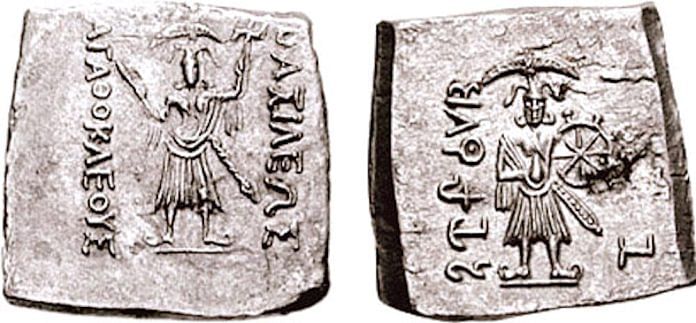India is gripped in an unprecedented festive mood with the consecration of the Ram temple in Ayodhya on 22 January. Millions of people in India and around the world celebrated the event. After all, it was a once-in-a-lifetime occurrence. Ram Lalla came home after a long wait.
The celebrations and fervour have also led to some counterviews. From discredited court testimonies to outright rejection of temple worship in ancient India, there are many opinion articles that have been written in leading publications. A majority of them suggest that temple worship is contrary to Hindu traditions of ancient India, and some even suggest that there were no large temples before 500 CE.
The truth, however, is different. Temple construction and temple worship were in practice centuries before the Common Era. Large temples were not only built in India but also in faraway places like Vietnam.
Coins, deities—and 2nd century CE Vietnam
A case in point is Audumbara, a successor state of the Indo-Greeks, in modern-day Himachal Pradesh. The Audumbaras ruled in the first century BCE, practised Hinduism, minted coins with Hindu iconography, and used the Kharosthi script. A square Audumbara punch-marked coin shows a pillared temple with a trident standard. A wavy line under it probably represents a river. It is a depiction of a Shiva temple along a river. The Audumbaras also issued coins with the Nandi (humped bull, a vehicle of Shiva) and an elephant with text reading, ‘Bhagavata mahadevasa rajarana’ in Brahmi. The text indicates reverence to Shiva.


The depiction of a pillared temple tells us that it was definitely not a small structure. Pillars, as we know, are only used when there is a large roof to support. The image also shows two tiers of what looks like a shikhara, indicating height. It is almost impossible to guess the exact dimensions of the temple, but it can be assumed that it was large enough to need support from multiple pillars. It had a roof, strong enough to support a two-tier shikhara, all signs of a large structure.
Linh Son Bac, an archeological site in Vietnam dating back to at least the second century CE, has yielded a Hindu temple. In the report submitted by the Vietnamese National Commission for UNESCO (2022), the commission attests to the find. The presence of temples as early as the first century BCE in India and the second century CE in Vietnam establish the fact that temples were an integral part of Hindu religious culture much before 500 CE.
Temples are associated with the worship of the iconic forms of divinity. An idol showing the iconography of the deity is installed and worshiped in the sanctum. The form and iconography of a deity evolve over a period of time and get formalised at some stage. We have evidence of the depiction of two such deities from at least 180 BCE from modern-day Afghanistan. Six Indian drammas (a form of currency derived from Greek drachma) were excavated in Ai-Khanoum on the Afghanistan-Tajikistan border. These drammas had the Puranic deities Krishna and Balarama with their respective iconography. Balarama is depicted with halayudha (plough-weaponed) and Krishna with a chakra.

This is revealing because the presence of these deities indicates not just their importance to the local population but also their status as icons of worship. Given that during the same period the Audumbaras were building temples to Shiva, it won’t be a stretch to assume that temples to other deities were also built. The claim that India, a few centuries before the Common Era, did not have temples seems weak.
Also read: When did large Hindu temples come into being? Not before 500 AD
Brahminical texts promote temple worship
It is also suggested that not only were temples absent in ancient India, the Brahminical literary traditions actively ignored or opposed temple-based religious and ritual activities. Such inferences are dishonest. If one reads the texts in their entirety and understands the context of the verses, it becomes abundantly clear that there is no discord between the Brahminical traditions and temple worship.
The Vishnu Smriti, for example, mentions temples in great detail. Section 30 of the text deals with the conduct of a pupil who is engaged in the study of the Vedas. There is a list of dos and don’ts, which a pupil is expected to follow. There are instructions on the correct posture of the pupil while studying, physical and mental health issues, and locations ideal for studying. These instructions are to create a conducive atmosphere for the pupil and save them from any distractions. Verse (30:15) reads, ‘Nor (study) in the vicinity of a temple, of a burial ground, of a place where four ways meet, or of a high road’. This is an instruction to ensure a pupil is not in a place with distractions. All the four places mentioned in the verse have high footfalls and are obviously not conducive for studying. Nowhere does the verse imply that a temple is inferior to Vedic practices or learning.
But does a mention of a burial ground and temple in the same sentence lower the prestige of a temple? Was the verse meant to imply that a temple is a place of low prestige like a burial ground? It is unlikely to be so. Throughout India, there are many temples in or around cremation grounds. The famous Manikarnika cremation ghat in Varanasi has a temple near it. There is a famous Hanuman temple just opposite the Nigam Bodh cremation ghat in Delhi. Hindus do not see the cremation grounds as a place of low prestige. On the contrary, it is the place where one attains sadgati and is sent off to the afterlife.
Apart from Vishnu Smriti, other texts like Manusmriti talk about temple rituals as well. In fact, the Manusmriti goes a step further and puts a penalty on individuals who disobey the rules of temple worship. The verse 3:150 of the Manusmriti reads, ‘The man who makes a living for three years by worshipping Gods is called the devalaka, despised at all offerings to Gods and Pitṛs; he is to be regarded as unfit for company at all functions.’ The verse is not condemning the ritual specialists at temples but stating that ritual worship of Gods (in a temple) in return for money is a sin. This implies that ritual worship in the temple should be done without monetary expectations. The Manusmriti, in fact, mentions temples multiple times, including for auspicious occasions like bringing a newborn to a temple during its sixth month. Manusmriti also assigns punishment for temple desecration. Verse 9:279/280 provides for punishments for anyone who breaks into, steals, or destroys the idol in a temple.
Another text, the Vashistha Dharmasutra, mentions temples as an ideal place for wandering ascetics to rest. Section 10 of the Vashistha Dharmasutra deals with the conduct of wandering ascetics and ensures they stay away from places where they may form social attachments. The verse 10:03 of the text reads, ‘He should sleep on the ground and not keep a fixed residence, staying in the outskirts of a village, in a temple or an abandoned house, or at the foot of a tree.’ The context and the full text of the verse make it abundantly clear that a wandering ascetic should shun social attachments and seek shelter in places where such attachments are likely to grow.
Both Vishnu Smriti and Vashistha Dharmasutra talk about temples in high regard. The Vishnu Smriti (90:10-12) says, ‘A builder of temples enters the dwelling-place of that deity to whom he has erected a temple. He who causes (a temple erected by another) to be whitewashed acquires brilliant fame. He who causes (such a temple) to be painted with (a different) colour (such as blue, yellow, and others) attains the world of the Gandharvas.’ These verses clearly exalt the virtues of temple building and upkeep.
The most relevant verse from the Vishnu Smriti in today’s context is 90:19. The verse reads, ‘He who consecrates anew a well, or a park, or a pool, or a temple (when they have been soiled) obtains the same reward as he who first made them.’ The consecration of the Ram temple in Ayodhya is in line with what the Vishnu Smriti recommends.
There is little doubt that not only did ancient India have temples, even large ones, but there were clear instructions in the Brahminical texts on building, decorum, and upkeep of temples. Temple rituals were seamlessly woven into the social life of common people, where regular upkeep was suggested, and family events like the birth of a child too were linked with temples.
Vijender Sharma is a history enthusiast and author of ‘Essays on Indic History’. Views are personal.
Editor’s note: This article is a response to ThePrint columnist Patrick Olivelle’s article ‘When did large Hindu temples come into being? Not before 500 AD’.
Patrick Olivelle’s response to Vijender Sharma:
“Temple building and temple worship was in practice in centuries before the Common Era. Large temples were not only built in India but also in faraway places like Vietnam.”
My question is—if that is so, why is there no archeological evidence in the subcontinent for such large structures? The respondent has not provided any. Oc Eo Ba in Vietnam is, as far as I can tell, principally a Buddhist site that also contains many different layers of architecture including Hindu. Although the larger archeological complex may go back to the first century or so before the common era, there is no evidence that sites identified as Hindu should be dated to that period. The Audumbara seal does contain an image that may be a representation of a temple. But we have yet to find on the ground remains of such temples. When I posed this question to an eminent archeologist, who is also an expert in numismatics, he responded: “This is an important question. You’re right, the earliest Hindu temples that can be dated on the basis of archaeological evidence are not attested before the 4th century CE. Similarly, no sculptures of Hindu gods in non-perishable materials have been found before the 1st century CE. There is a huge gap between the iconography of coins and archaeological reality.” One possible explanation is that these temples were built with wood and other perishable material. Then the question arises, why there is such a dissonance between that, and the Buddhist material remains from that period built with stone and brick.
I have produced critical editions of the Vashistha Dharmasutra (1st c. BCE), Manava Dharmashastra (2nd c. CE), and the Vishnu Smriti (7th c. CE). What the respondent says is unfounded. Only three passages of Vasishta refer to temples: 6.17 gives five places, including devagriha, from which earth for cleansing should not be taken; 10.13 tells an ascetic to stay in four places, including a devagriha; and 11.31 says that under some circumstances, food for gods at an ancestral offering may be placed in a devatayatana, indicating probably a shrine room in a home. They do not show Vasistha’s “high regard” for temples. Manu mentions temples three times: 4:46 says one must not urinate in a dilapidated temple (jirnadevayatana); 8.248 says that a temple (devatayatana), probably a shrine, may be built to mark a boundary; and 9.280 instructs the king to execute anyone breaking into the treasury, armory, or temple (kosthagara, ayudhagara, devatagara), the triple use of agara pointing to all three being part of the royal compound. The Vishnu Smriti is a late text (7th century or later) originating in Kashmir. As the respondent says, it has several references to temples and image worship, but by that time temples were a common feature of the religious landscape. One final point, the respondent’s interpretation of the meaning of devalaka is taken from medieval commentaries written during a time when temples and temple priests were prevalent. The intent was to make these smriti injunctions inapplicable to such priests. Such an interpretation is missing in the smriti texts themselves. I refer the interested reader to my study dealing with this issue in greater detail written long before the Ayodhya temple controversy: “The Temple in Sanskrit Legal Literature,” in Archaeology and Text: Temple in South Asia, ed. H. P. Ray (Delhi: Oxford University Press, 2010), pp. 191–204.
With this, ThePrint closes the discussion.
(Edited by Prashant)




Good discourse